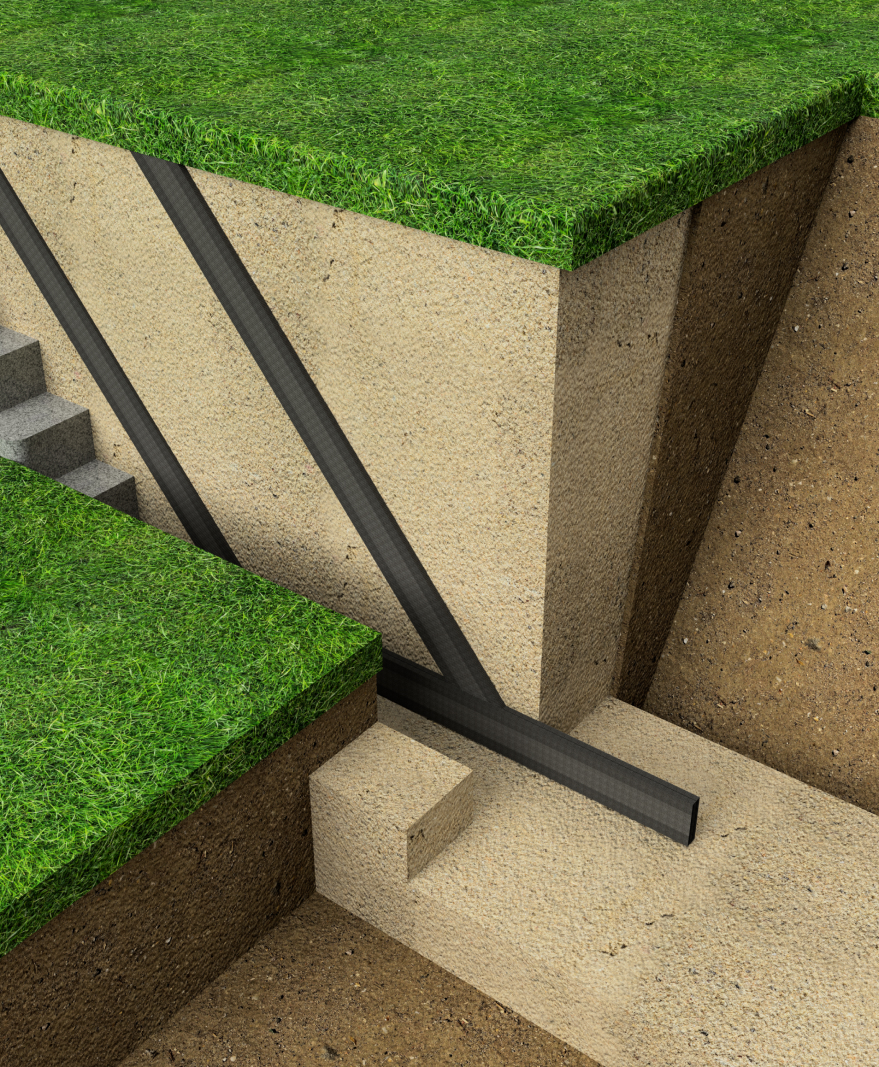How Do Soil Nails Work?
Any mound of earth or retaining wall without soil nailing or proper drainage is vulnerable to problems such as erosion and even catastrophic failure. When soil nails are combined with a Hydraway drainage system, retaining walls and other similar civil infrastructure can perform their desired functions better.
Soil nails are vertical rods drilled into the earth to reinforce sloped sections of earth. Soil nails can be installed to be shallow or deep in the earth and are appropriate for use in open or confined environments with limited space, such as under bridges.
This technology has its roots in the middle of the 20th century when anchored bars were used to support retaining walls. Soil nails are permanent installations today but were used as temporary tools to support the safe excavation of earth in Canada and the United States. This cost-saving and time-saving technology worked better than conventional tieback construction solutions.
Today, soil nail retaining wall construction can reach up to 75 feet tall. Soil nail walls are now considered the most effective solution for temporary and permanent support for building excavations.

Combining Hydraway With Soil Nails
When soil nails, also known as ground screws, are installed, the structural integrity of earthen structures is dramatically strengthened. However, these structures are still vulnerable to the erosive effects of water. An effective drainage solution can be installed alongside soil nail walls to mitigate these effects.
Soil nail drilling is performed in vertical steps, with construction starting at the top of the excavation and proceeding down. Once an excavated level is reinforced with soil nails, a permanent or temporary facing is applied to retain the soil. The resulting soil structure has nails placed to depth and of a sufficient density to ensure it can resist the forces imposed by the soil and surcharge loads.
A drainage system is installed behind soil nails walls to collect perched groundwater or infiltrated surface water that is present behind the facing and direct the collected ground water away from the wall. Hydraway, a geocomposite strip drain, is laid behind the wall to collect the water and channel it away.
Soil nail wall systems are a perfect match for Hydraway because both present the best solution available today for construction projects. When the two solutions are combined, they are a powerful system that keeps people safe and helps ensure the success of earth retention projects.
- Higher Inflow Rate: Hydraway allows water to enter the system and flow freely to its destination in a way that that other strip drain systems simply can not match.
- Clog Resistance: Hydraway’s needle-punctured filter fabric is thermally bonded to the core of the strip drain to prevent dirt, silt, or sand from entering the system.
- Easy Installation: Hydraway installation is speedier because it does not exhibit coil memory after being shipped.

Contact Us
Please complete the form below for more information on our solutions or to learn about our distributor’s program.

